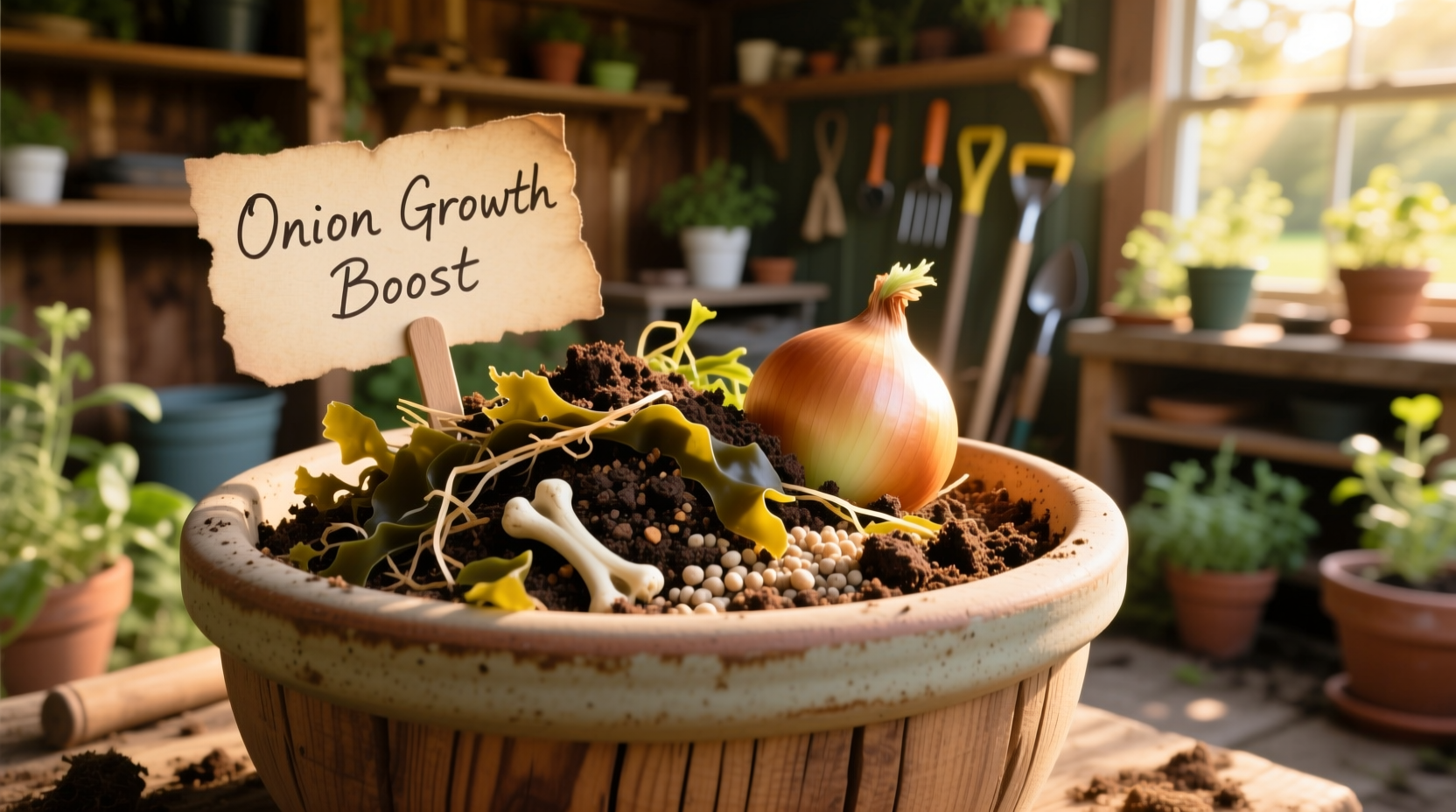Discover exactly how to fertilize onions for bigger bulbs and better yields with this science-backed guide. Whether you're growing sweet Vidalias or pungent red onions in your backyard garden, proper fertilization makes the difference between sparse harvests and abundant crops. We'll break down the precise nutrient requirements, timing schedules, and organic alternatives that professional growers use.
Why Onions Have Unique Fertilization Needs
Unlike many vegetables, onions develop their edible portion underground while simultaneously growing extensive leaf systems above ground. This dual growth pattern creates specific nutritional demands throughout their lifecycle. According to the University of Minnesota Extension, onions require higher phosphorus levels during root establishment and controlled nitrogen application to prevent excessive top growth that reduces bulb size.
| Growth Stage | Nitrogen (N) | Phosphorus (P) | Potassium (K) | pH Range |
|---|---|---|---|---|
| Pre-planting | Low | High | Moderate | 6.0-6.8 |
| Early growth (4-6 weeks) | High | Moderate | Moderate | 6.0-6.8 |
| Bulb formation | Reducing | Low | High | 6.0-6.8 |
This nutrient timeline reflects research from the University of California Agriculture and Natural Resources, showing how onion nutritional needs shift dramatically as they progress from seedlings to mature bulbs. Applying nitrogen at the wrong stage can cause excessive foliage at the expense of bulb development.
Pre-Planting Soil Preparation Essentials
Successful onion growing starts weeks before planting. Conduct a soil test to determine existing nutrient levels - the USDA Agricultural Statistics Service reports that 68% of home gardeners skip this critical step, leading to improper fertilization. Amend your soil based on results:
- For every 100 square feet, incorporate 2-4 inches of well-rotted compost
- Add 1-2 pounds of bone meal for phosphorus if your soil test shows deficiency
- Mix in 0.5 pounds of sulfate of potash per 100 sq ft for potassium needs
- Avoid fresh manure which can cause onion rot and disease

Fertilization Schedule for Maximum Bulb Development
Timing matters more than you might think when fertilizing onions. Follow this science-based schedule for optimal results:
At Planting Time
Apply a balanced fertilizer (10-10-10) at 1 pound per 100 square feet, worked into the top 6 inches of soil. For organic growers, use 3-4 inches of compost mixed with rock phosphate at 10 pounds per 100 sq ft. The Oregon State University Extension confirms this initial phosphorus boost increases root development by up to 40%.
Three Weeks After Planting
Apply nitrogen-rich fertilizer (21-0-0) at 0.5 pounds per 100 sq ft. This supports the critical leaf growth phase where onions develop the photosynthetic capacity needed for bulb formation. Water thoroughly after application to prevent root burn.
Six Weeks After Planting
Apply a second nitrogen application at the same rate. Research from Cornell University shows this timing coincides with maximum leaf growth, directly correlating to final bulb size. Avoid getting fertilizer on leaves to prevent burning.
When Bulbs Begin Forming (usually 8-10 weeks)
Stop nitrogen applications completely and switch to a potassium-rich fertilizer (0-0-60) at 0.25 pounds per 100 sq ft. Continuing nitrogen at this stage produces thick necks that don't cure properly and increases disease susceptibility.
Organic Fertilizer Options That Actually Work
Many gardeners prefer organic methods, but not all organic fertilizers provide the right nutrient balance for onions. Based on trials conducted by the Rodale Institute, these options deliver measurable results:
- Composted poultry manure - Provides balanced NPK but must be aged at least 6 months
- Fish emulsion - Excellent for early growth but requires frequent application
- Alfalfa meal - Slow-release nitrogen source that won't burn plants
- Kelp meal - Provides trace minerals that improve flavor and storage quality
Remember that organic fertilizers release nutrients more slowly than synthetic options. Plan applications 1-2 weeks earlier than you would with conventional fertilizers to ensure nutrients are available when needed.
Common Fertilization Mistakes That Reduce Your Harvest
Even experienced gardeners make these critical errors that diminish onion yields:
- Over-fertilizing with nitrogen during bulb formation - Causes excessive top growth and small bulbs
- Fertilizing too late in the season - Prevents proper curing and reduces storage life
- Applying fertilizer without watering - Creates concentrated salts that burn roots
- Using high-salt fertilizers - Onions are particularly sensitive to salt damage
- Ignoring soil pH - Onions struggle to absorb nutrients in soil below pH 6.0
Troubleshooting Nutrient Deficiencies
Learn to recognize these visual signs of improper fertilization:
- Yellowing leaf tips - Indicates nitrogen deficiency during early growth
- Purple discoloration on leaves - Sign of phosphorus deficiency
- Brown leaf margins - Potassium deficiency, especially during bulb formation
- Stunted growth with dark green leaves - Excess nitrogen application
Correct deficiencies promptly but avoid over-correction. The University of Georgia Extension recommends no more than 0.25 pounds of nitrogen per 100 sq ft in any single corrective application to prevent further stress.
Final Fertilization Tips for Bigger, Sweeter Onions
Professional growers use these advanced techniques to maximize their onion harvests:
- Side-dress fertilizer 3-4 inches from plants rather than broadcasting
- Water thoroughly before and after fertilizer application
- Use foliar feeding with fish emulsion during early growth for quick uptake
- Stop all fertilization 4 weeks before harvest to improve storage quality
- Test soil every 2-3 years to monitor nutrient balance changes
Remember that proper fertilization works in concert with other cultural practices. Onions grown in well-drained soil with consistent moisture and proper spacing will respond best to your fertilization efforts. The USDA Agricultural Research Service confirms that combining correct fertilization with optimal growing conditions can increase yields by 30-50% compared to standard practices.











 浙公网安备
33010002000092号
浙公网安备
33010002000092号 浙B2-20120091-4
浙B2-20120091-4